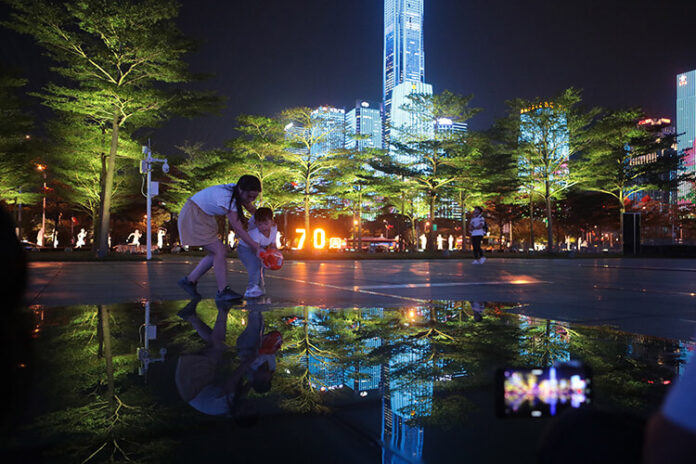
More and more parks and recreational landscapes are open at night, and some parks have higher utilization rates at night than during the day. So, how to do a good job in the garden road and waterscape lighting project?
Key points of garden road lighting design

Garden roads should first follow specific metering standards to determine the lighting level and meet functional requirements. When the scale of the garden is large and the types of garden roads are complex, the lighting level is systematically divided and the brightness level is controlled to show the order of the garden landscape, guide visitors, enrich the night view and save energy.
Main road lighting project: The main road is a route for a large number of tourists in the garden, connecting various scenic spots, main scenic spots and activity facilities in the park. According to specific characteristics, this path adopts a two-row symmetrical layout or a single-row layout. On the contrary, the two-row layout helps to enhance the axis and render the atmosphere.
Branch road lighting project: A branch road is a passage for tourists from one scenic spot to another, connecting various scenic spots. This path usually uses conventional garden lighting and indirect lighting.
Road lighting project: The road is mainly used for walking and resting, guiding tourists to reach all corners of the garden, such as mountains, watersides and forests. Most of them arranged tortuously freely. On such small park roads, the focus of lighting design is not to allow people to clearly recognize faces, but to maintain a certain degree of darkness. Its purpose is to relax visitors, reduce visual fatigue and feel the real night. Therefore, this type of path is suitable for indirect lighting, low-power underground lighting, low lawn lighting, low-level lighting or no lighting, and strict control of glare.
Thimphu Lighting Project: Thimphu is a stepping stone road across small rivers and creeks. You can use special lighting equipment (such as fiber optics and luminous stones) to decorate or low-power underwater spotlights to sweep the edges of stepping stones to express a natural taste.
Key Points of Garden Waterscape Lighting Design

Waterscape is an important part of garden landscape. The garden waterscape is colorful. There are natural scenery imitating natural water bodies, such as natural and wild lakes, wetlands, streams, waterfalls, etc., as well as artificial waterscapes, such as conventional swimming pools scattered in various local city squares, colorful fountains and various green spaces. According to the dynamic and static relationship of water bodies, various water features in the garden can be divided into static water features and dynamic water features.
Among them, static waterscapes can be divided into conventional, natural and mixed types. Most of the conventional static waterscapes are conventional pools, including square and long ponds; most of the natural static waterscapes are natural lakes, such as Changxi in the Old Summer Palace, front and back lakes, etc. Mixed static water features include regular and natural styles. Dynamic water features, including streams, waterfalls, streams, falling water, fountains, etc.
The night scene lighting method on the water surface is mainly to use the real water surface to beautify the environment, and use the lighting of the trees and railings on the shore to form reflections on the water surface. The reflection and the real scene set off each other, and the front and back, plus the dynamic effect of reflection, make people full of interest and beauty.
For fountains and waterfalls, underwater lighting can be used. The underwater lights of the same or different colors are arranged in a certain pattern to illuminate upward. The effect is magical and interesting.
